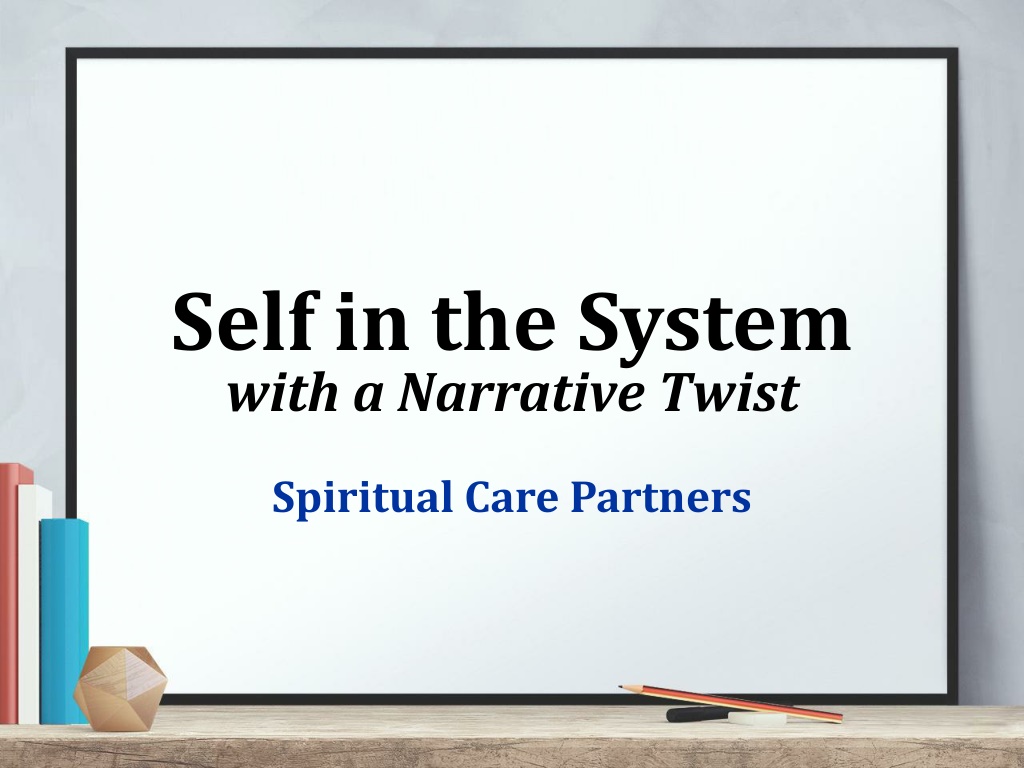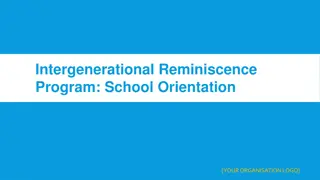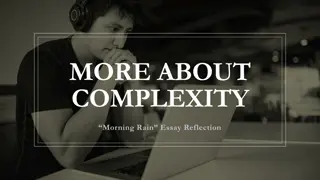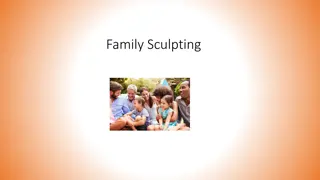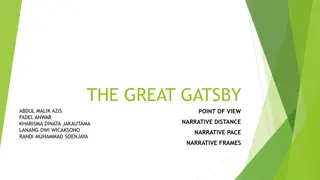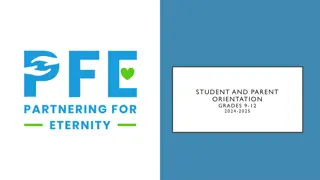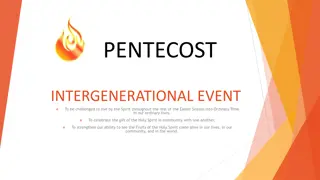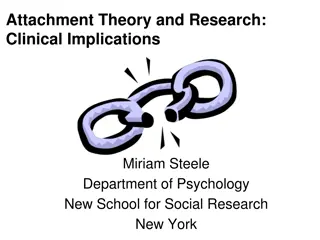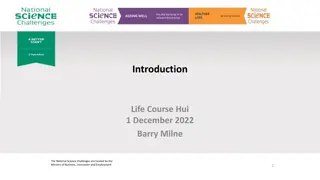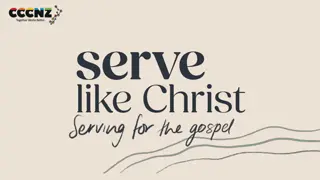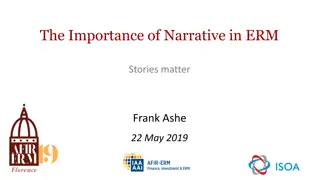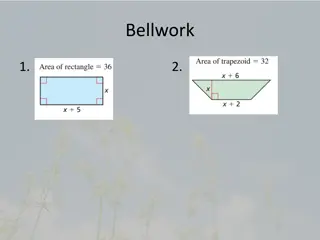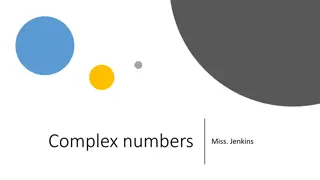The Intergenerational Family Narrative: Unraveling Complex Relationships
Exploring the intricate family dynamics of Ben Franklin and his lineage reveals a saga of estrangement, bitter conflicts, and attempts to find companionship across generations. Through the lenses of Family Systems Theory and Narrative Theory, the story unfolds with themes of abandonment, attachment, and the impact of familial patterns on relationships.
Download Presentation

Please find below an Image/Link to download the presentation.
The content on the website is provided AS IS for your information and personal use only. It may not be sold, licensed, or shared on other websites without obtaining consent from the author. Download presentation by click this link. If you encounter any issues during the download, it is possible that the publisher has removed the file from their server.
E N D
Presentation Transcript
Self in the System with a Narrative Twist Spiritual Care Partners
Who is This? Age 17, left his family in Boston and moved to Philadelphia, telling no one of his whereabouts. Bitter about family conflicts, especially with an older brother, James. His brother had beaten and humiliated him time and time again.
His parents did not support him. Remained estranged from his parents for the rest of his life. A prodigious writer, he never mentioned his parents.
He had an illegitimate son, William, to whom he became very attached. William became his companion and collaborator for many years. This relationship ended in a bitter split.
Quote Nothing has ever hurt me so much and affected me with such keen sensibilities as to find myself deserted in my old age by my only son. Benjamin Franklin
Intergenerational System Like his father, William had a son out of wedlock and tried to fashion his son into a companion. Franklin s grandson then fathered two children out of wedlock, from whom he, too, became estranged. This father and son also ended bitterly estranged.
William doted on his grandchild to the extent of pretending she was his own child. Franklin doted on his grandchild after turning away from his son.
Using Two Lenses Family Systems Theory Narrative Theory
Family as a System/Story In each family, a story is playing itself out, and each family's story embodies its hope and despair. Auguste Napier
You Can Go Home Again Monica McGoldrick Whatever happened in your family shapes you. Every fact of your family s biography is part of the many-layered pattern that becomes your identity. It makes sense to consider yourself within the entire three or four generational family as it moves through time.
Issues that are not resolved at one point in the life cycle tend to linger for resolution at the next phase. Failing to connect with your family leaves you alone in important ways that lovers, children, friends, and work cannot replace.
The Bible is Full of Family Systems ABRAHAM 1st Generation SARAH HAGAR ISAAC ISHMAEL
2nd Generation ISAAC REBECCA ESAU JACOB
3RDGeneration JACOB BILHAH LEAH ZILPAH RACHEL REUBEN-1 JOSEPH-11 GAD-7 DAN-5 SIMEON-2 ASHER-8 NAPHTALI-6 BENJAMIN-12 LEVI-3 JUDAH-4 ISSACHAR-9 ZEBULAN-10
Quote All history, including the histories of our families, is part of us, such that when we hear any secret revealed, a secret about a grandfather or an uncle, or a secret about the battle of Dresden in 1945, our lives are made suddenly clear to us, as the unnatural heaviness of unspoken truth is dispersed. For perhaps, we are like stones our own history and the history of the world embedded in us. A Chorus of Stones, Susan Griffin
1. Identified Patient The family member in whom the family s stress or pathology has surfaced. School failures Drugs Drinking etc. Focus on the IP helps the family avoid the real problem.
2. Homeostasis (balance) Every family has achieved some kind of emotional balance in order to exist and maintain its identity. Importance is on position rather than personality. It helps explain a system s resistance to change.
3. Differentiation of Self Differentiation refers to the ability of each family member to maintain his or her own sense of self, while remaining emotionally connected to the family. One mark of a healthy family is its capacity to allow members to differentiate, while family members still feel that they are "members in good standing" with the family.
4. Extended Family Field Our family of origin, that is, our original nuclear family (parents and siblings) plus our other relatives (grandparents, aunts, uncles, cousins, etc.) is important.
Gaining a better understanding of the emotional processes still at work with regard to our family of origin, and modifying our response to them, can aid significantly in the resolution of emotional problems in our immediate family (e.g. in marriage or parenting). Family trees are always trees of knowledge and often they are also trees of life.
5. Emotional Triangle When two parts of a system become uncomfortable with one another, they will triangle in or focus on a third person, as a way of stabilizing their own relationship with one another. We can only change a relationship to which we belong. The way to bring change is to maintain a well-defined relationship with each, and to avoid responsibility for their relationship with one another.
The key is to maintain a non-anxious presence. A B C
Key to Wholeness Allowing New Stories to Emerge
STORIES TO ENGENDER Healing Renewal Forgiveness Reconciliation Identity Agency Empowerment Hope
KEY 1: Knowing the Family Story Externalizing & Deconstructing Secrets Dysfunctional Narratives Constructing And Internalizing Stories of Strength and Resilience Stories of Hope
Secrets Family secrets act as the plaque in the arteries of communication; they cause stoppage in the general flow and not just at the point of their existence. E. H. Friedman, Generation to Generation
My Grandpa and Grandma Hardworking Grandpa Emotional Distance in the Relationship Secret?
Pain and Responsibility If one family member can successfully increase his or her threshold for another s pain, the other s own threshold will also increase, thus expanding his or her range of functioning. E.H. Friedman, Generation to Generation
FORMATIVE NARRATIVES Duty Shame Guilt Loss Tragedy Success Infidelity Values Tradition
KEY 2: Becoming My Own Story Differentiating My Own Story Responsibility for My Own Emotions and Actions Avoiding Triangulation Finding My Own Voice Practicing Non-anxious Presence
KEY 3: Creating a Hopeful Future Story Find What Is Important Imagine What Could Be if Not Fearful Flesh Out the Details Enlist Support Start with Small Changes
Finding a New Storyline You are somebody. I will live into love. I can trust again. Let me live it fully. I will always have you. It s all right.
Assignment Describe a formative narrative that has shaped your identity. For example, it could be a narrative that describes how you view success or duty, or any of the other formative narratives listed. The purpose of this exercise is to take a look at why you do the things you do. 1 page (typed), 12 pt. font, double-spaced Due in one week
Sources Slide 5 Image: "Franklin's Experiment, June 1752," published by Currier & Ives Slide 16 Image: Cartoon by Bil Keane Friedman, E.H. Generation to Generation: Family Process in Church and Synagogue. New York: The Guilford Press, 1985. Griffin, Susan. A Chorus of Stones: The Private Life of War. New York: Anchor Books, 1992. McGoldrick, Monica. You Can Go Home Again: Reconnecting with Your Family. New York: W.W. Norton & Company, 1995.
